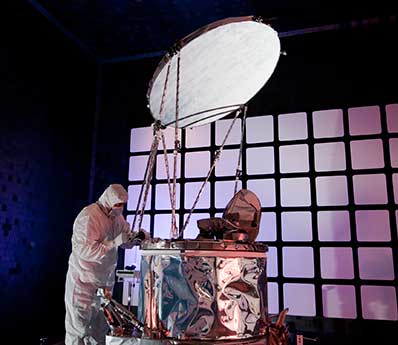
Global Precipitation Measurement-Microwave Imager
Predicting rain
Did you know that freshwater makes up less than one percent of the Earth’s total water? Scientists from around the world are studying how precipitation, climate and weather affect the availability of our water resources, especially in the context of global climate change.
The Global Precipitation Measurement (GPM) mission, a joint effort between NASA and the Japan Aerospace Exploration Agency (JAXA), will provide better global precipitation measurements. GPM will tell us more about Earth’s water and energy cycles, improve forecasting of events that cause natural disasters, and extend our current capabilities for using highly accurate precipitation data.
The GPM satellite successfully launched from southern Japan on Feb. 27, 2014 onboard an H-IIA launch vehicle.
The Global Precipitation Measurement (GPM) mission, a joint effort between NASA and the Japan Aerospace Exploration Agency (JAXA), will provide better global precipitation measurements. GPM will tell us more about Earth’s water and energy cycles, improve forecasting of events that cause natural disasters, and extend our current capabilities for using highly accurate precipitation data.
The GPM satellite successfully launched from southern Japan on Feb. 27, 2014 onboard an H-IIA launch vehicle.
NASA GMI
Click this link to learn more about the GMI instrument on the NASA website.
GMI data maps flooding
AER's FloodScan system is using GMI data to monitor flooding in Malawi and Mozambique after cyclone Idai.

What We Did
Instrument provider
We designed, developed and fabricated GMI. It works in concert with the JAXA-built Dual-Frequency Precipitation Radar (DPR) instrument. GMI’s higher frequency channels measure small particles of ice, snow and rain while DPR gives a 3D view of a column of precipitation. Together, these instruments give scientists an unprecedented view of small precipitation particles with a much higher degree of accuracy.
GMI’s design provides state-of-the-art accuracy, so the instrument has become the calibration standard for the entire GPM constellation. GMI will be used to cross-calibrate other GPM sensors, setting a new reference standard for the scientific community.
GMI’s design provides state-of-the-art accuracy, so the instrument has become the calibration standard for the entire GPM constellation. GMI will be used to cross-calibrate other GPM sensors, setting a new reference standard for the scientific community.
Instruments & Sensors
Delivering accurate data from all platforms in space, on land, in the air and at sea
Weather
Reliable weather space systems that meet specific military and civilian needs
Payload Operations Center
Cost-effective optical technologies that offer high value and high performance
